Did the Town of Greenwich ignore local common lore when it came to approving the major construction project known as MISA?
Had Town leaders not heard all the tales of residents and past Town employees dumping a host of debris into the wetlands that became the current high school that was built in 1969?
A June 14 report in Greenwich Time condemns the Town of Greenwich for blithely advancing the GHS MISA project in 2011 despite having “compelling evidence that something foul was lurking underground.”
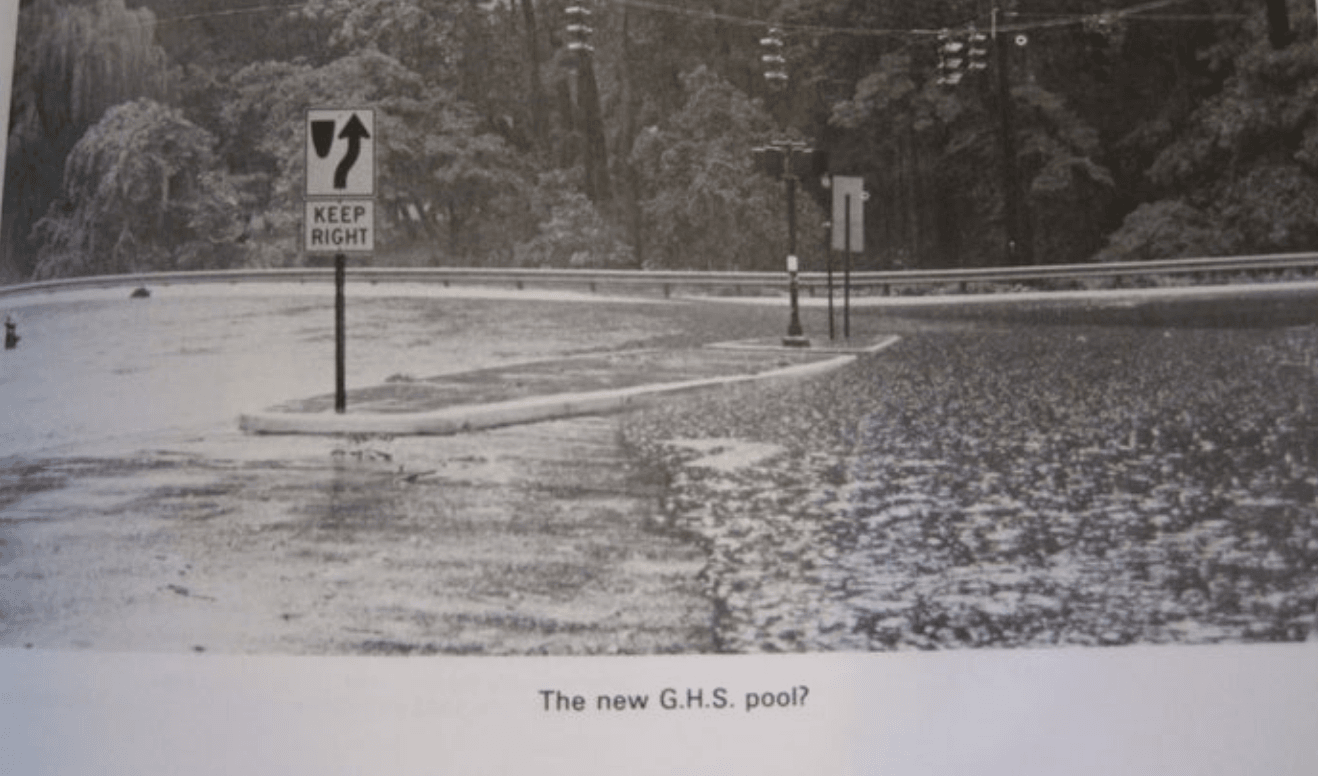
The article, titled, “Did Greenwich officials know what dangers lurked below?”takes the Town to task for failing to test the dirt even after its “own consultant discovered ‘little cinders’ and other debris underground during soil stability tests in 2009, solid evidence of burned material — not the clean fill that should have been there.”
“Documents show the town knew — or should have known — its high school property had been filled in with suspect materials during the late 1960s, and it was likely the soil came from two highly contaminated sources: a former Greenwich garbage incinerator and the Cos Cob coal-fired electric plant,” said the Greenwich Time report, which is based on a Hearst Connecticut Media review of hundreds of documents.
Greenwich High School, which sits on 55 acres along Hillside Rd, was built around 1969, prior to PCB’s being banned. PCBs — synthetic chemical mixtures that were used in industrial insulation and hydraulic equipment, and have been linked to liver damage and cancer — were banned under the Toxic Substances Control Act of 1976.
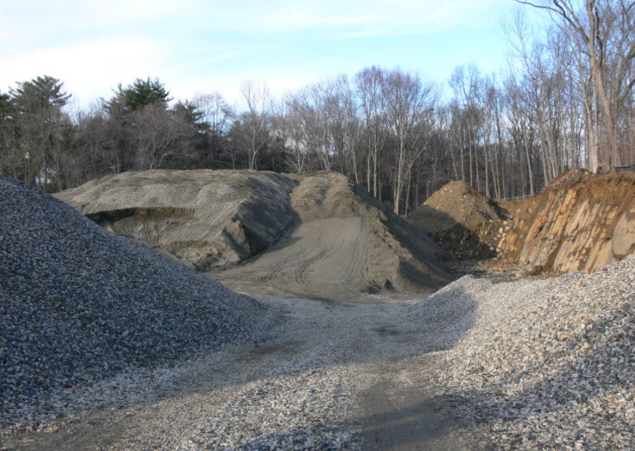
“The black portion in the middle is coal ash deposited in 2005, not 50 years ago as claimed by The Town. The blasted hill (without USACE permission) is part of the “minimal” excavation (The Town falsely told USACE it had not added fill to the site since 1970),” said Bill Effros, 35 year resident of Old Church Rd adjacent to GHS campus. Contributed photo, Bill Effros
For several years, Bill Effros has taken the Town to task for its reaction of surprise to the discovery of PBCs.
The longtime Old Church Rd neighbor of GHS submitted photos to Greenwich Free Press of the site in 2006 and claims that black substance visible in one photo is coal ash deposited in 2005, not 50 years ago as claimed by the Town.
In a May, 2014 letter submitted to the editor of Greenwich Free Press, Effros wrote, “The campus was knowingly built in a 55-acre swamp that has been repeatedly filled with toxic waste. When we acquired it, the swamp was 40 to 45 feet above sea level and town surveys indicate it is now 60 feet above sea level in some places and at least 55 feet above sea level almost everywhere else,” Effros said in the letter.
Effros said, “The difference in elevation is from what the Town has been dumping into the swamp — residential hazardous waste, Cos Cob power plant coal ash, industrial waste, and hazardous chemicals. The swamp has been used for 60 years as the secret town dump.”
Long Soggy History of “Ten Acres”
This current GHS campus’s long history is nothing if not soggy. Older Greenwich residents relay stories of a time when ice from the site was cut and sold prior to refrigeration. In fact, for decades, residents ice skated on the site which was known as Ten Acres.
Oral histories in the Greenwich Library contain evidence of warnings that went unheeded long before the Wetlands Act was passed in1972. Long before “fill” was brought in to combat soggy fields in the 1970s and again between 2003 and 2005.
The words of Robert Holbeck, who served on both the RTM and BET and was a selectman in the mid 1960s, are foreboding. Holbeck was interviewed for the oral history project (housed in Greenwich Library) in 1976 at the age of 55.
Weighing in on the “new” high school, Holbeck said, “They built it where I used to ice skate; where the football field is. …My grandfather cut ice there for the ice house…we would go to the ponds with our big saws and cut ice, and pay for it. But I skated there. That was Ten Acres…There’s no firm foundation there, you see. Mother Nature. You don’t fool with Mother Nature,” he warned.
When the $15 million high school on Hillside Road opened on Oct. 25, 1970, townspeople people were still hotly debating the disposition of the “old” high school. A public referendum in 1977 resulted in a close decision to tear down the rear section of the former high school and renovate the front half. The building is now Town Hall.

Bleachers moved to higher ground. Photo, GHS Compass yearbook 1977.
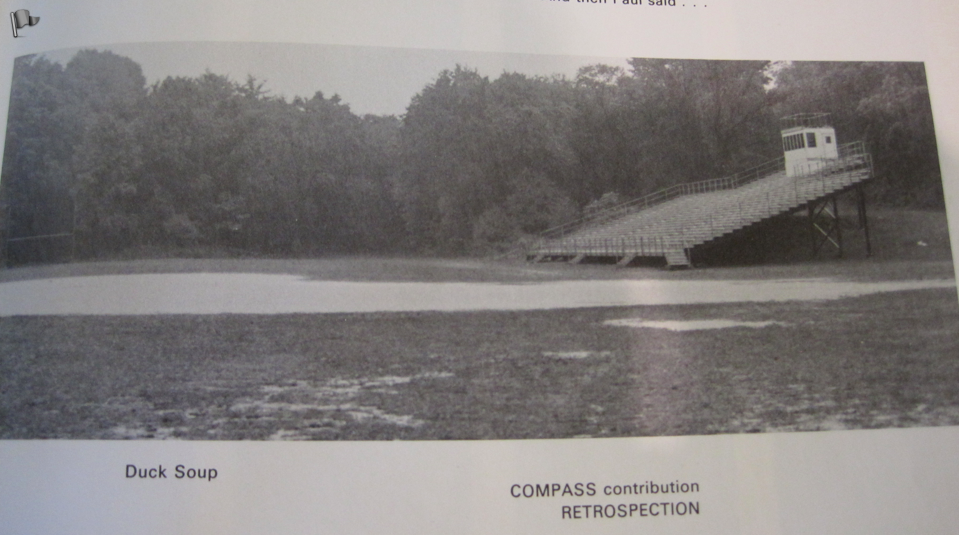
Field at northern end of GHS campus under water after rain and bleachers that would be moved by helicopter to the southern end of campus. Photo, 1977 GHS Compass yearbook.
In the 1970s, the playing fields were often under water after heavy rain and students joked about bringing flippers to school for PE class.
A helicopter was enlisted to move spectator bleachers from a playing field at the northern end of campus to higher ground where the current Cardinal Stadium is.
Fast forward to the summer of 2011 when a backhoe operator struck suspicious looking soil determined to be contaminated. Talk at the August 25, 2011 Board of Education meeting was full of references to “unusual soil” and “hot spots” to be remediated.
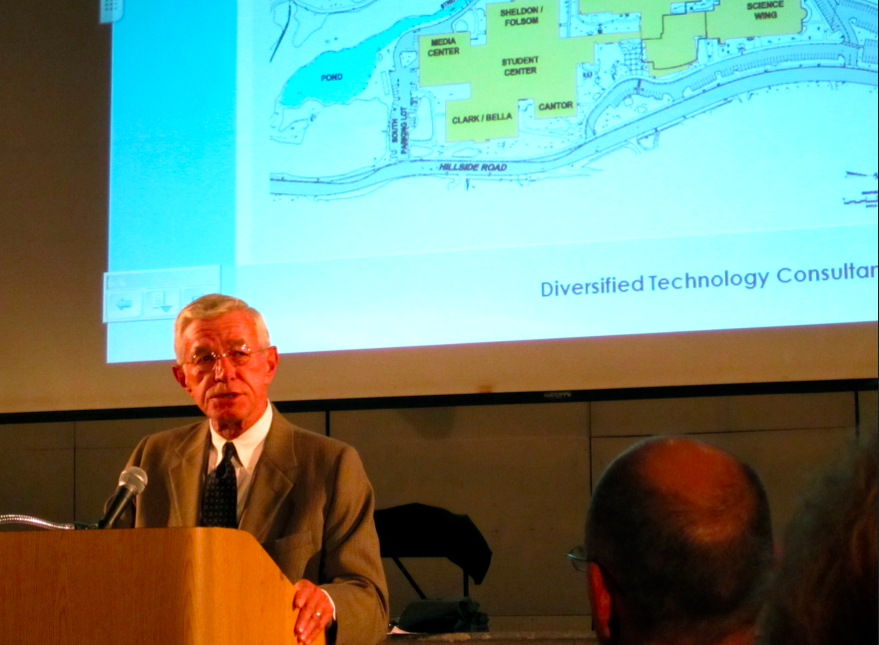
The then interim Greenwich Schools Superintendent, Roger Lulow, speaking at a parent information night the first day of school in 2011 where members from EPA, AECOM and the building committee put parents at ease about the discovery of toxins in the soil at the GHS Campus over the summer. Credit: Leslie Yager
The GHS PTA organized a public information forum on the environmental impact of the MISA construction and scheduled it for the first day of school, Wednesday, September 7, 2011 in the GHS auditorium.
At that information session, experts including the US EPA, State DEEP, and representatives from AECOM (the Town’s environmental testing consultant) addressed parents’ concerns about safety of the fields. The CT Dept. of Health’s Sharee Rusnak characterized state standards as conservative as they’re designed to protect children under two years old who have a lot of hand-to-mouth contact. “Yes, I believe you are safe,” she said during the session.
On Sept. 5, 2013 the Greenwich High School soil clean up plan known as the “Remedial Action Plan,” or RAP, was posted on the Greenwich Public Schools website. The community was given 30 days to submit comments. The plan called for soil containing PCBs greater than 50 mg/kg to be transported to Wayne, Michigan for disposal and soil containing PCBs less than 50/mg/kg to be transported to Seneca Meadows, Inc. landfill in Seneca Falls, NY. The plan was then presented to the community on Sept. 18, with experts fielding questions from the community.
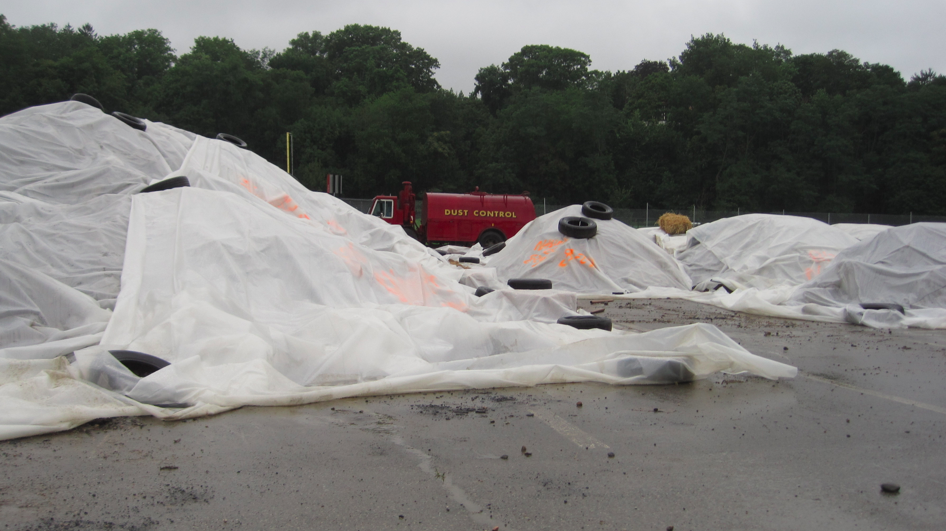
Mounds of soil secured by tarps and tires the morning of Hurricane Irene on Aug. 27, 2011. Credit: Leslie Yager
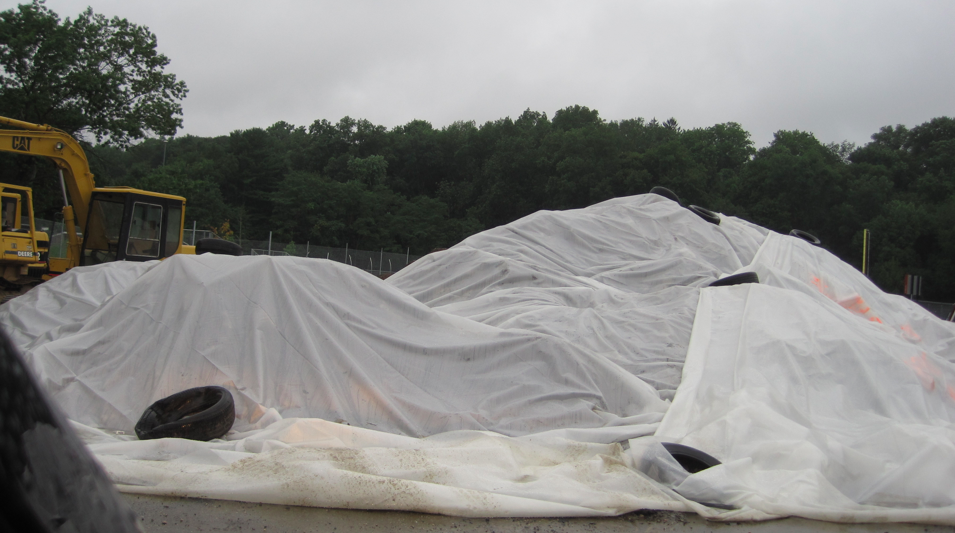
Mounds of toxic soil secured by tarps and tired the morning of Hurricane Irene on Aug. 27, 2011. Credit: Leslie Yager
Initially students and staff at GHS dealt with the inconvenience of closed athletic fields, shuttling off to Central Middle School or Julian Curtiss for various practices. At one point, Cardinal stadium reopened, but with the bleachers roped off.

Mounds of dirt covered with grass in June, 2014. Credit: Leslie Yager
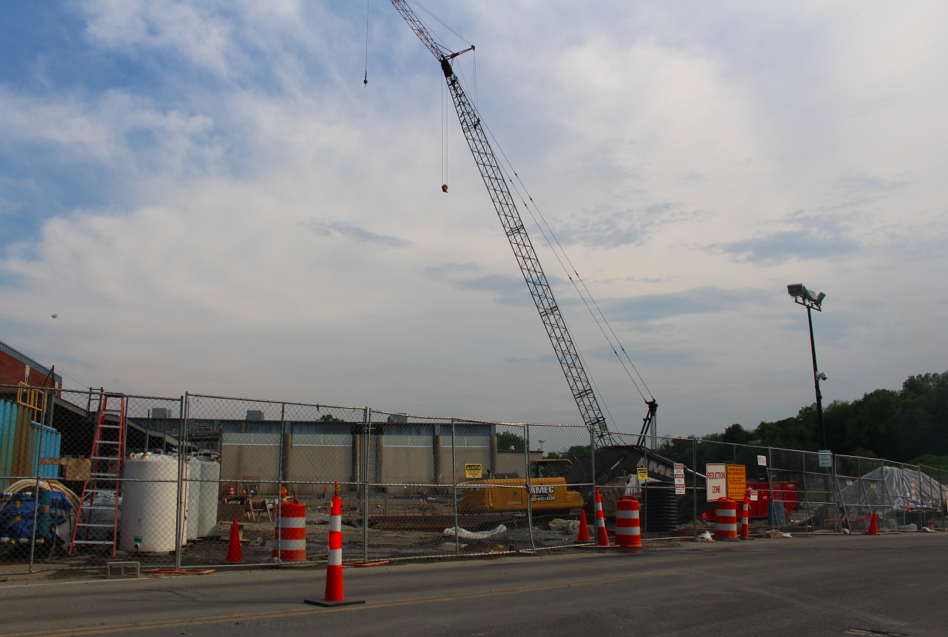
A giant crane and heavy equipment in the area under construction on the west side of GHS for MISA, June, 2014. Credit: Leslie Yager
More recently members of the GHS community have dealt with the inconvenience of construction and parking shortages.
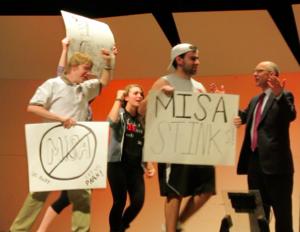
SRO 2014 skit included students protesting MISA which they said stank. Credit: Leslie Yager
At this year’s SRO show, a senior playing the fictional anchorman Ron Burgundy, said, “These past four years have been a mess. They have been terrible! Problems are literally rising out of the ground. You have toxins in the parking lot. You got MISA.”
Toward the end of the performance a “MISA” monster emerged and declared, “I’m Hungry!” as he attacked Headmaster Winters on stage and then vanishing in a puff of dirt.
Discovery of toxic soil notwithstanding, the MISA project is well under way and hard to miss from any spot on campus.
Related Stories:
Fun Times in the GHS Parking Lot: Not!